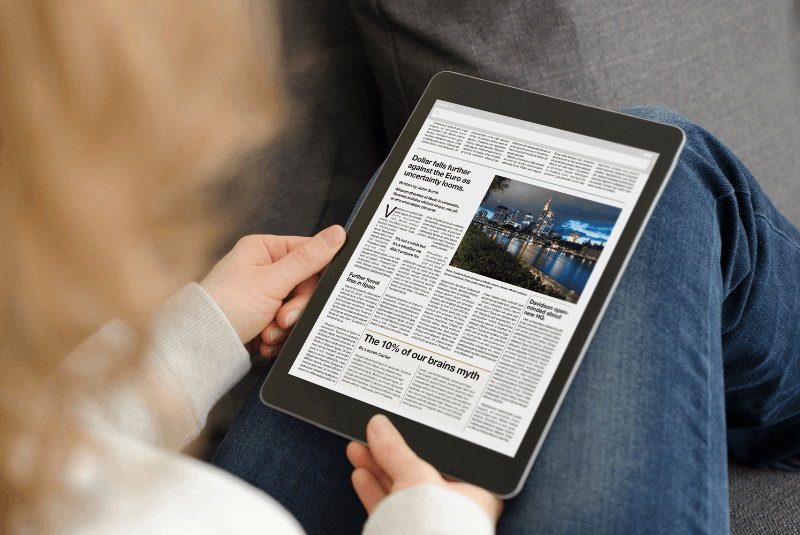When we talk about blogging, a structured piece of content is the crux before you start writing. The structure is the bone of your text that will help the reader understand your point and the core of your message. A structured article will enhance the readability of your content. This post will give you tips to structure your articles, that will help you set up an excellent, clear text structure.
How to set up your text structure?
Get your pen and paper ready. Now write down what you want to write about. The initial procedure includes keyword search. Ideally, you must have already done your keyword search. Next step would be setting up a text structure and keep it handy while writing a blog post.
Step 1: Create a list of topics
Once you have collected all the information to use in your blog post or article. You can start with the structuring. Therefore you need to make a list of everything you need in your article to cover.
Step 2: Bundle topics together
Once you have a clear overview of all the topics, you would want to discuss this in your article. You can start building topics. Similar topics should be discussed together.
Step 3: Order your topics
After the bundling process, you should decide the order in which you want to present the articles. In primary of the cases, you will determine the order calculatively, for instance, you want to different aspects or angles of the main topic of your blog. You can go from explaining basics and going to more difficult issues. The problematic order is known as a didactic order. Didactic is a good option when you are describing the problematic subject.
Table for order type
| Order Type | Order |
|---|---|
| Thematic | Ordered on theme, aspect, topic |
| Chronological | Old to new |
| Didactic | Easy to hard |
| Problem solution(s) | Introduce the problem first then find the solution. |
Creating paragraphs
The bundle of topics you have formed in the text structure you have set up can be used to write paragraphs.
What makes a good paragraph?
Three things define a paragraph
1. The paragraph should form a thematic unit
2. A paragraph contains one core sentence and elaboration of this core sentence.
3.Info should be more visible by using whitespace.
Many writers make mistakes while creating paragraphs. Some writers put whitespace in random places in the paragraph for creative purposes. Without thinking about the comprehensibility between the paragraphs. Making it confusing for the reader. These mistakes mess up the structure of your article.
The length of the paragraph should depend on the theme you are discussing, it can between two and fifteen sentences. When you are writing for websites, we would advice keeping shorter paragraphs (less than 6 or 7 sentences). Start your paragraphs with most essential phrases and elaborate on them. Your reader will grasp an essential aspect of your article from the first few sentences. Conclude with longer paragraphs and summarizing sentences clarifying your point.
Use transition words
The best way to guide your readers is by using many transition words. Transition words will give direction to your readers. Transition words show that you are summarizing, comparing or concluding something. Summarizing words like and or too, comparing words like less than, instead of or concluding words like thus, consequently, hence.
Table 2: Here are a few examples of transition words
| Type of relation | Examples of transition words |
|---|---|
| Enumerate | And, first of all, also, another, furthermore, finally, in addition |
| Cause | Because, so, due to, while, since, therefore |
| Compare/contrast | Same, less, rather, while, yet, opposite, much as, either |
| Conclude | As a result, hence, consequently, therefore, in conclusion |
| Ambiguity | Seems like, maybe, probably, almost |
| Emphasize | Most of all, most noteworthy, especially relevant |
Transition words work like cement between your sentences. Transition words are the connecting words between your sentences and paragraphs. Always use transition words while summarizing or enumerating. Using signal words in your conclusion will help readers grasp the core message.
Use Headings (it will help your readers and Google)
A good heading will give a good SEO. Google recognizes your headings and uses them to determine the topic of the content on your website. Hence, your heading can be used to optimize your post. Titles also help your readers quickly scan through your text and decide which parts of the document to read in your article. Therefore be attractive covering the niche of your content.
Put heading to each paragraph or series of the paragraph containing similar topics. Putting a heading above a very long paragraph or shorter paragraphs is thematical.
Conclusion
Set a coherent structure for your blog as it will result in better understanding of the niche of your blog post. If your audience understands your posts better on social media, they are more likely to buy what you are selling.
Take your time to think about the text and structure of your article before you start writing. Think of the structure of your paragraphs, the use of signal words and headings in your post. Follow these simple rules for a perfect content structure and you will attract many readers.

